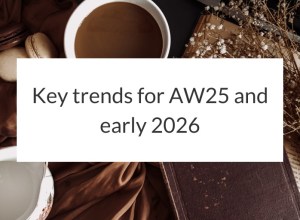I had the pleasure of attending a photoshoot for a Press Loft client (in fact, also my husband’s gift business) with the lovely guys at Kalory back in July. It was the hottest day of the year and we were shooting for Christmas – there is nothing quite like setting up a Christmas tree in 32 degree heat!
Anyway, Franck and Brijesh run a very successful photography studio working for the likes of Habitat, Harrods and Cartier. If anyone knows how to help maximise budgets on a photoshoot, it’s these guys! Below, they have kindly shared with us their top tips – straight from the professionals – to ensure you really get the most from each shoot.
Getting the Most from Your Product Photoshoot Budget – Top Tips
For a brand of any size, a photoshoot is an incredibly important investment in money and in time. It is also strategic, as it will be helping to portray the “brand position” on the company’s website, social media and PR. We are regularly approached by designers and brands with lots of questions about photoshoots, so we hope this article will help everyone in the planning stages.
 Where to Start When Planning Your Photoshoot
Where to Start When Planning Your Photoshoot
There is a lot to think of when organising a photography session: concept, props, location (venue or studio), with or without models, where the images will be used (do you need a banner shape, a portrait, a landscape or a square or all of this?), the resolution of the files (are you planning a regular social media/PR use or will you print a large billboard or poster for a trade show?), the level of quality of the photographs, the budget…
All of these questions can seem overwhelming! But, helpfully, there 3 elements that will strongly give a direction to the other variables:
● How many final images you need?
● What type of photographs are needed: packshot, lifestyle, still life or a mix of all?
● What is the budget?
Depending on the number of pictures needed and your budget, you can get a rough idea of the cost per image.
Packshot Images
If all the images needed are packshot (product photos often against a white background), the level of quality you can get will be determined by the budget you have. A reasonable budget will allow the photographer to spend more time in lighting the piece precisely and the retoucher to work on the images with a higher attention to detail. The same piece can be shot and retouched with a basic technique in 10-15 minutes per image, but it can also be shot and retouched to a very high-end standard, taking up to 4 hours per image! The result and the quality are, of course, very different between these two extremes.
There is a wide range of different options in-between but, depending on the product, 30 to 45 minutes of shooting and retouching time results in a very good image.
Still Life or Lifestyle Images?
If you are after great still life or lifestyle images, you have a lot more variables to play with. Still life images usually don’t require a model, while lifestyle photographs do feature a model.
If the budget is tight, we always advise the client to get creative and take the still life route: you can avoid the model costs and you will probably end up shooting the project in a studio, avoiding location or venue fees, as well as mobile studio fees. If you’re on a budget, it is often better to create simpler, more easily achievable images of great quality, instead of planning a complicated location photoshoot, leaving no budget for a higher level of retouching. At the end, it is all about the visual impact of the photography.

Maximising and Allocating Your Photoshoot Budget
When allocating your budget, the level of quality should always be your priority. You don’t always have to go for the top, but it is important to budget enough lighting and retouching time to get a fantastic result and to really show the product in its best light.
If you have a moderate budget, you can choose to spend a large part of it on props for a still life shoot, for example working with a paper artist or a set designer or, if you are looking for a more lookbook feel, hire a model. A model photoshoot can be organised at the studio, outdoors, or in an interesting location, but hiring a venue will definitely add to the overall spend.
The above elements are some pointers on how to organise and plan your photoshoot. The best is to start by figuring out the number of images needed, the types of images needed and the budget you can allocate to the project. At Kalory, we help our clients create a shoot that gives them the right results (both in terms of creativity and quality) depending on their brand’s DNA and positioning. With clients, it starts with identifying the 3 elements mentioned above. We then usually work on a mood board, sharing a secret board on Pinterest to clearly identify their creative requirements: colour tones, set up, locations, model poses for example.
Photography is the foundation of a great brand presence on social media. Since Instagram has increased its power of attraction, the importance of great images has risen to a new high. This means planning and discussing a photoshoot with the photographer beforehand is absolutely vital to ensure that the end result meets your expectations!

About Kalory Photo & Video
Kalory Photo & Video is a UK photography studio located in Central London. The expert team of photographers and retouchers create high end imagery of jewellery, watches and interiors for the luxury and retail industries.
Upload your product images and press releases to get seen by journalists worldwide with Press Loft – click here to start your free two week trial.
Header image from Darlings of Chelsea









